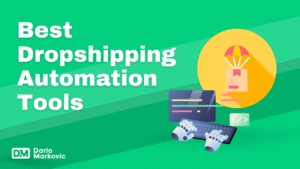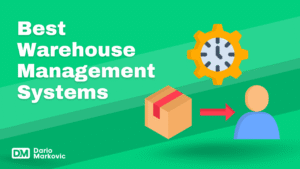Listen up because I’ll let you in on a little secret. After countless hours of experimenting and perfecting, I’ve discovered the holy grail of B2B sales funnels.
Get ready to have your mind blown as I reveal the top 5 b2b sales funnel examples with case studies that will skyrocket your business to unimaginable success.
But here’s the thing – these aren’t your run-of-the-mill, cookie-cutter funnels. These are the cream of the crop, the best of the best. The kind of funnels that make your competitors green with envy and your bank account burst at the seams.
Ready to unlock the potential of your B2B sales? Join me on this exciting journey as we explore proven strategies to take your business to new heights!
Understanding the B2B Sales Funnel
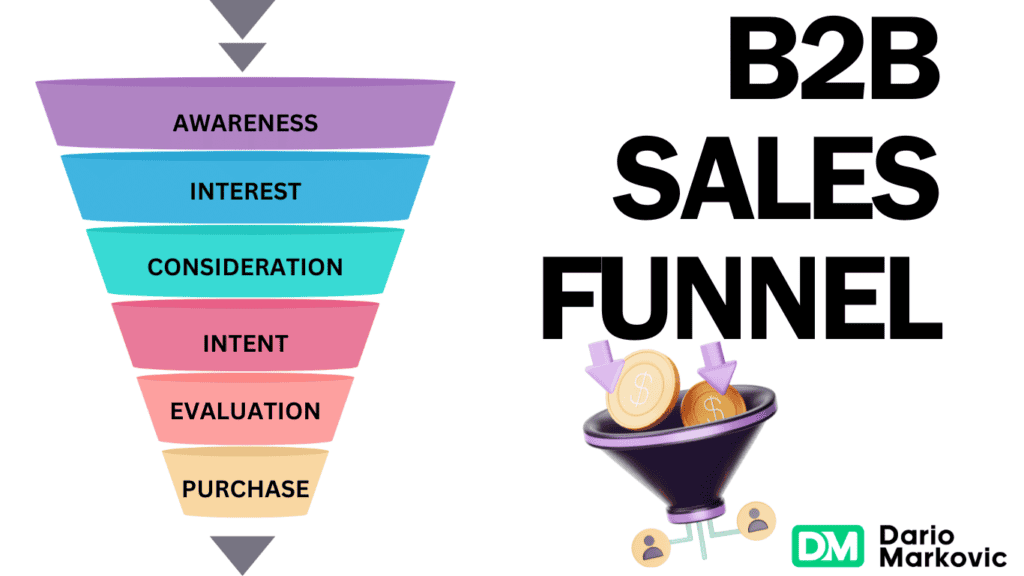
The B2B sales funnel is the backbone of any successful business. But what exactly is it? Simply put, it’s the journey your potential customers take from initial awareness to final purchase.
Think of it as a roadmap guiding prospects through each stage of the buying sales process.
Stages of the B2B Sales Funnel
Every B2B sales funnel is unique, but they all share the same core stages:
- Awareness Stage: Prospects first learn about your brand, usually through content marketing, social media, or SEO.
- Interest Stage: Prospects are intrigued and start researching your offerings. They might read blog posts, download whitepapers, or attend webinars.
- Consideration Stage: This is a crucial phase where potential buyers have moved past the awareness stage and are actively evaluating their options before making a purchase decision. During this stage, buyers research and compare different solutions or vendors to address their needs or challenges.
- Evaluation Stage: This is the make-or-break moment. Prospects compare you to competitors and decide if you’re the best fit.
- Engagement Stage: Your sales team steps in to nurture leads, answer questions, and address concerns. The goal? Moving prospects closer to a purchase.
- Purchase Stage: The finish line. Prospects are ready to become customers. They sign on the dotted line and officially enter your sales pipeline.
Importance of the B2B Sales Funnel
Why should you care about your B2B sales funnel? Because it’s the key to sustainable growth. A well-optimized funnel helps you:
-
- Understand your customer’s buying process
-
- Identify bottlenecks and drop-off points
-
- Align marketing and sales efforts
-
- Forecast revenue and set realistic goals
-
- Measure ROI and make data-driven decisions
Without a defined sales funnel, you’re flying blind. You might generate leads, but converting them into customers? That’s a shot in the dark.
Optimizing the B2B Sales Funnel
Building your B2B sales funnel is just the beginning. To truly succeed, you need to optimize it continuously. That means:
- Analyzing data at each stage to identify improvement areas
- A/B testing everything from landing pages to email campaigns
- Personalizing content and outreach based on buyer personas
- Equipping your sales team with the right tools and training
- Gathering feedback from customers to refine your approach
Remember, your sales funnel is a living, breathing entity. It should evolve with your business and adapt to changing customer needs.
The B2B sales cycle is longer and more complex than B2C. But with a solid funnel in place, you can navigate even the most challenging deals.
So roll up your sleeves and get ready to optimize. Your dream customers are waiting at the end of that funnel.
Top 5 B2B Sales Funnel Examples
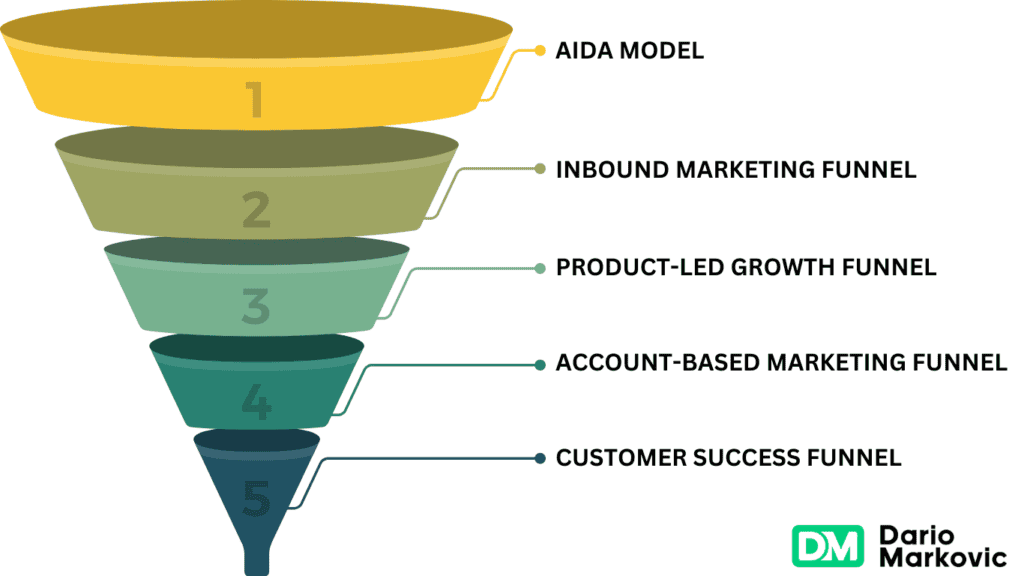
One size doesn’t fit all when it comes to B2B sales funnels. The most successful businesses tailor their approach to unique products, services, and target audiences.
Need some inspiration? Check out these top-performing B2B sales funnel examples.
1. The Classic AIDA Model
AIDA stands for Attention, Interest, Desire, and Action. It’s a tried-and-true formula that’s been around since the late 19th century. Here’s how it works:
- Attention: Grab prospects’ attention with a bold headline, striking visual, or thought-provoking question.
- Interest: Pique their interest by highlighting a problem they face and hinting at your solution.
- Desire: Stoke their desire by showcasing benefits, social proof, and a strong value proposition.
- Action: Spur them to take action with a clear, compelling call-to-action (CTA).
The AIDA model is a solid foundation for any B2B sales funnel. But it’s just the beginning.
2. The Inbound Marketing Funnel
Inbound marketing is all about attracting prospects to you rather than chasing after them. The inbound funnel typically includes:
- Attract: Draw prospects with valuable content, SEO, and social media.
- Convert: Turn visitors into leads with irresistible offers and opt-in forms.
- Close: Nurture leads into customers with targeted email campaigns and sales outreach.
- Delight: Keep customers happy (and coming back for more) with exceptional service and ongoing support.
3. The Product-Led Growth Funnel
Product-led growth (PLG) is a business methodology where the product itself drives customer acquisition, retention, and expansion. A typical PLG funnel might look like this:
- Acquisition: Users sign up for a free trial or freemium version of your product.
- Activation: They experience the “aha” moment when they realize your product’s value.
- Revenue: Engaged users upgrade to a paid plan or subscription.
- Referral: Happy customers spread the word, bringing in even more users.
For good reason: PLG is all the rage in the SaaS world. By letting your product do the talking, you can scale faster and more efficiently.
4. The Account-Based Marketing Funnel
Account-based marketing (ABM) flips the traditional funnel on its head. Instead of casting a wide net, you focus on a select group of high-value accounts. An ABM funnel usually involves:
- Identify: Select target accounts that fit your ideal customer profile.
- Expand: Research key stakeholders and decision-makers within each account.
- Engage: Create personalized content and outreach tailored to each account’s needs and pain points.
- Advocate: Turn successful customers into brand advocates who can help you land even more high-value accounts.
ABM requires tight alignment between marketing and sales. But when done right, it can lead to bigger deals and longer-lasting relationships.
5. The Customer Success Funnel
Acquiring new customers is great, but retaining them is even better. That’s where the customer success funnel comes in. A typical customer success funnel includes:
- Onboarding: Get new customers up and running quickly and smoothly.
- Engagement: Provide ongoing support, training, and resources to keep customers engaged.
- Expansion: Identify opportunities for upsells, cross-sells, and account growth.
- Advocacy: Turn satisfied customers into brand champions who can help drive referrals and testimonials.
By prioritizing customer success, you reduce churn and unlock new revenue streams. Happy customers are your best salespeople, after all.
No matter which B2B funnel examples you follow, keeping your customer at the center is always key. Understand their needs, challenges, and goals, and tailor your approach accordingly.
Your sales funnel is your secret weapon. Wield it wisely, and watch your business soar.
Strategies for Each Stage of the B2B Sales Funnel
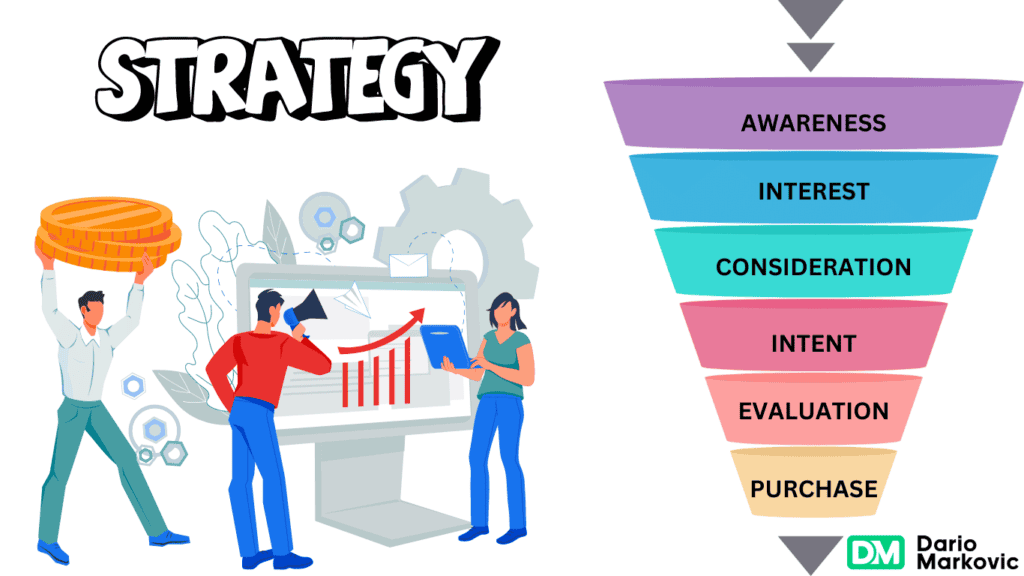
You’ve mapped out your B2B sales funnel, but now what? How do you effectively move prospects through each stage?
It’s not just about having a funnel in place—it’s about implementing the right strategies at each phase to guide potential customers towards that coveted conversion.
Awareness Stage Strategies
In the awareness stage of the B2B sales funnel, businesses should focus on attracting potential customers through content marketing, social media marketing, and search engine optimization.
By creating valuable content that addresses their target audience’s pain points and challenges, businesses can establish themselves as thought leaders and build brand awareness.
I’ve seen this work wonders firsthand. In one of my previous roles, we crafted a series of blog posts and social media content around common industry challenges.
The result? Web traffic soared, and we saw a significant uptick in qualified leads entering our funnel.
Evaluation Stage Strategies
In the B2B sales funnel’s evaluation stage, businesses should provide detailed information about their products or services, including case studies, whitepapers, and product demos.
By addressing potential customers’ specific needs and concerns, businesses can help them make an informed decision and move them closer to a purchase.
Email marketing is also crucial here. Segment your list and send targeted, personalized content that speaks directly to each prospect’s unique pain points and goals.
Decision Stage Strategies
In the decision stage of the B2B sales funnel, businesses should focus on overcoming objections, negotiating terms, and closing the deal.
Businesses can convince potential customers to purchase by providing personalized proposals, offering discounts or incentives, and demonstrating the ROI of their solution.
Lead nurturing is key here. Stay top of mind with prospects through targeted email campaigns, retargeting ads, and personal outreach from sales reps.
Leveraging social proof like customer testimonials and case studies can also give hesitant buyers that extra push they need.
Post-Purchase Stage Strategies
Your job isn’t over once a prospect becomes a customer.
In the post-purchase stage of the B2B sales funnel, businesses should focus on providing excellent customer service, gathering feedback, and identifying opportunities for upsells and cross-sells.
By nurturing relationships with existing customers and continuously providing value, businesses can increase customer loyalty and drive long-term growth.
Consider offering a free trial or demo to get them hooked on your product. The key is to treat customers like partners, not just transactions.
Regular check-ins, personalized recommendations, and a genuine commitment to their success can transform one-time buyers into lifelong brand advocates.
Aligning Sales and Marketing Teams for Funnel Success
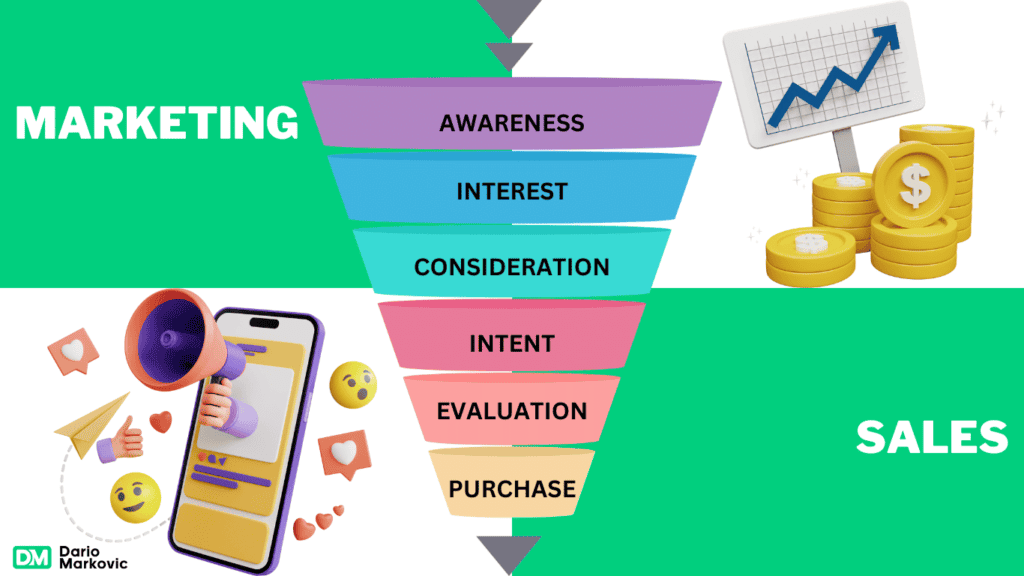
Your B2B sales funnel stages and strategies are mapped out, but one more crucial ingredient for success is alignment between your sales and marketing teams.
When these two departments are in sync, magic happens. Marketing attracts the right leads and creates relevant content, while sales nurtures relationships and closes deals.
It’s a match made in revenue heaven. But how do you achieve this elusive alignment? It starts with clearly defined roles, open communication, and a shared commitment to the same goals.
Defining Roles and Responsibilities
First things first: clarify who does what. Sales and marketing alignment begins with defining each team’s roles and responsibilities at each funnel stage.
Marketing is responsible for attracting leads and nurturing them until they’re sales-ready. They create content, run campaigns, and score leads based on engagement.
Once qualified leads are passed to sales, they work their magic and close the deal. Sales reps handle product demos, negotiations, and contract signings.
Clearly outlining these roles prevents overlap and ensures a seamless handoff between teams. No more leads slipping through the cracks or reps wasting time on unqualified prospects.
Establishing Communication Channels
With roles defined, it’s time to open the lines of communication. Regular meetings, shared dashboards, and collaboration tools are essential for keeping both teams informed and aligned.
Marketing should share insights on lead quality, content performance, and campaign results. Sales should provide feedback on lead follow-up, common objections, and closed-won/closed-lost reasons.
This ongoing dialogue helps marketing refine its targeting and messaging while giving sales the ammo they need to close more deals. It’s a virtuous cycle of continuous improvement.
Creating a Unified Message
Consistency is key for moving stage prospects through your B2B sales funnel. Marketing and sales must sing from the same hymn sheet, with a unified message and brand voice across all touchpoints.
This starts with developing a shared understanding of your ideal customer profile, their challenges, and how your solution uniquely solves them.
Marketing should infuse this messaging into all content and campaigns, while sales should reinforce it in their conversations and demos.
There are no mixed signals or contradictory claims – just a clear, compelling value proposition from start to finish.
Measuring and Analyzing Performance
Finally, don’t forget to track and measure your efforts. Regular reporting on key funnel metrics like conversion rates, lead quality, and revenue generated keeps everyone accountable and aligned.
Use this data to identify bottlenecks, optimize your strategies, and double down on what’s working. Continuous improvement should be the north star for both the marketing and sales teams.
And don’t be afraid to experiment. Pilot new tactics, A/B test messaging, and iterate based on results. The B2B landscape is always evolving – your funnel strategies should, too.
Aligning your sales and marketing teams takes work, but it’s worth it.
By defining clear roles, establishing open communication, creating a unified message, and continuously measuring and optimizing performance, you’ll create a well-oiled revenue machine that consistently attracts, converts, and delights your ideal customers.
Leveraging Technology to Optimize Your B2B Sales Funnel
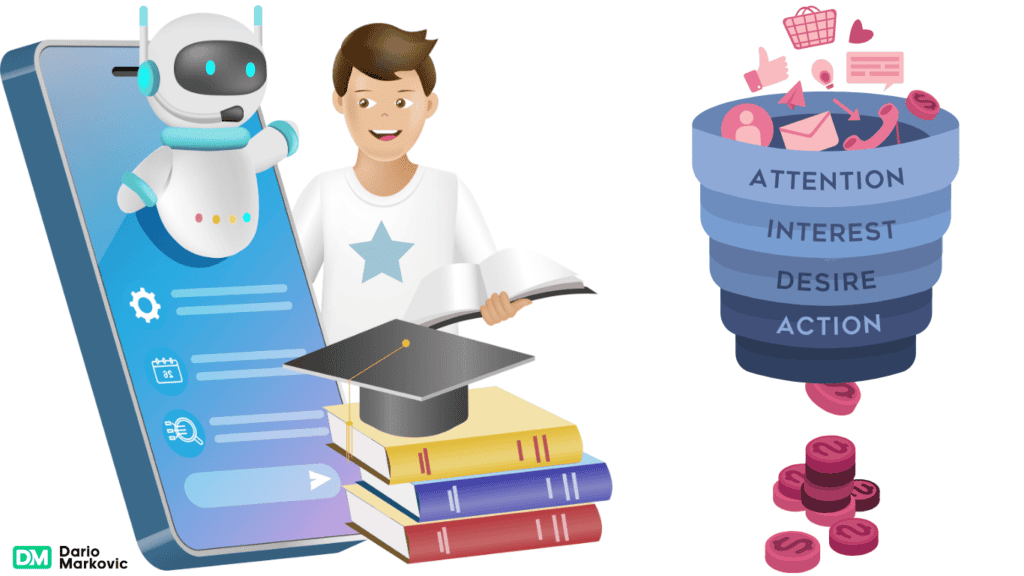
I’ve been in the B2B sales game for over a decade now. And let me tell you, technology has been an absolute game-changer when optimizing our sales funnel. Gone are the days of manually tracking leads and relying on gut instincts. We can generate, nurture, and convert leads like never before with the right tools.
CRM Systems
First, let’s discuss CRM systems. These systems are the backbone of any successful B2B sales funnel. They allow us to manage and analyze customer interactions and data throughout sales.
Using a CRM, we can track leads, identify opportunities, and gain valuable insights to continually improve our sales funnel.
It’s like having a personal assistant who never sleeps, constantly working to optimize our lead generation and conversion efforts.
Marketing Automation Tools
Next on the list are marketing automation tools. These tools are a lifesaver for streamlining and automating our marketing efforts.
From lead generation to nurturing to conversion, marketing automation allows us to deliver targeted content and personalized experiences at scale.
By automating repetitive tasks and delivering the right message at the right time, we can significantly improve the efficiency and effectiveness of our B2B sales funnel.
It’s like putting our marketing on autopilot, freeing up time and resources to focus on closing deals.
Analytics and Reporting Platforms
Now, let’s talk about the importance of analytics and reporting platforms. These tools give us the power to track and measure the performance of our sales and marketing efforts across the entire funnel.
Using tools like Google Analytics, we can gain insights into customer behavior, identify bottlenecks, and optimize our strategies for better results.
With real-time data, we can make informed decisions and continuously refine our approach to maximize our ROI.
It’s like having a crystal ball that shows us exactly where we need to focus our efforts for maximum impact.
Chatbots and AI Assistants
Finally, let’s not forget the power of chatbots and AI assistants. These tools are revolutionizing how we engage with potential customers in real-time.
Using chatbots, we can provide instant support, answer questions, and guide prospects through the sales funnel.
And with the help of AI, we can deliver personalized recommendations and experiences that improve the customer journey.
It’s like having a 24/7 sales rep who never gets tired and is always ready to assist and convert leads into customers.
The bottom line is this: leveraging technology is no longer optional in the world of B2B sales. It’s a necessity. Using CRM systems, marketing automation tools, analytics platforms, and AI-powered chatbots, we can optimize every stage of our sales funnel and achieve better results.
So, if you haven’t already, it’s time to embrace the power of technology and take your B2B sales to the next level. Trust me, your bottom line will thank you.
Crafting Compelling Content for Your B2B Sales Funnel
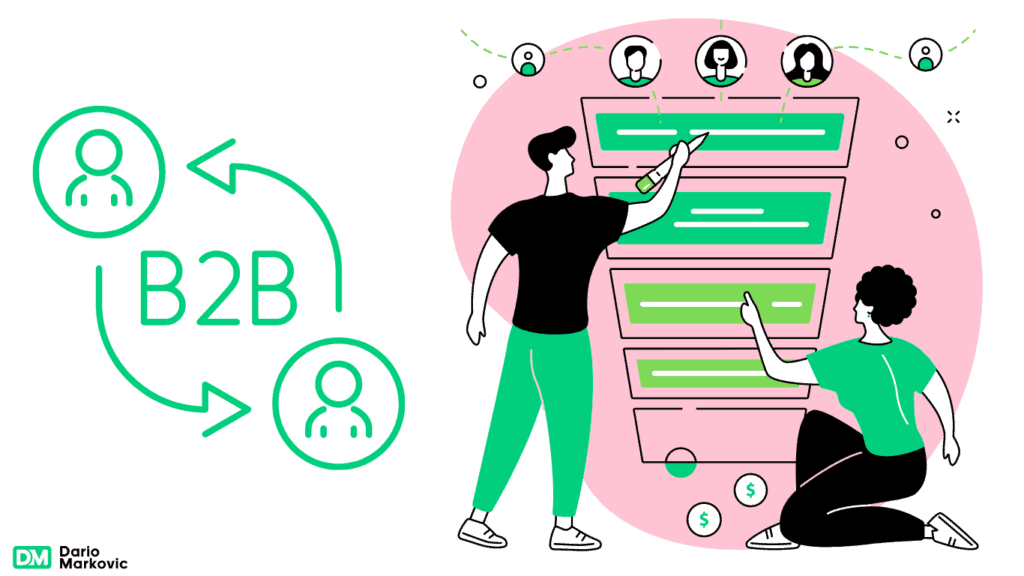
Content is king. You’ve heard it a million times, but it’s true. Especially in your B2B sales funnel, the right content can make all the difference in attracting, engaging, and converting your ideal customers.
But here’s the thing: not all content is created equal. To succeed, you must craft compelling content that resonates with your target audience and drives them to take action.
Identifying Your Target Audience
First things first, you need to know who you’re talking to. I mean, know them—their pain points, challenges, goals, preferences.
Everything. You can create content that speaks directly to their needs and desires by developing a deep understanding of your target audience.
It’s like having a secret weapon that allows you to connect with your ideal customers on a personal level.
So take the time to research your audience, develop buyer personas, and get inside their heads. Trust me, it’s worth the effort.
Addressing Pain Points and Challenges
Once you know your audience, it’s time to address their pain points and challenges head-on.
Your content should provide valuable insights, tips, and solutions to help your potential customers overcome obstacles and achieve their goals.
Creating content that solves real problems establishes yourself as a trusted advisor and builds relationships with your target audience.
It’s like being the superhero that swoops in to save the day, armed with the knowledge and expertise your customers need.
So don’t be afraid to tackle the tough topics and provide genuine value. Your audience will thank you for it.
Showcasing Success Stories
Nothing builds trust and credibility like real-world success stories. You demonstrate the value and impact of your offerings by showcasing case studies and examples of how your products or services have helped other companies achieve their goals.
These stories are powerful social proof, showing a potential customer that others have succeeded with your solutions.
It’s like having a team of satisfied customers vouching for you, sharing their experiences and results.
So, include case studies, testimonials, and other forms of social proof throughout your content. It can make all the difference in convincing prospects to take the next step.
Providing Valuable Resources
Finally, don’t forget to provide valuable resources that educate and engage your target audience. From blog posts to whitepapers to webinars and beyond, your content should offer something for everyone at every funnel stage.
Creating a library of high-quality resources establishes yourself as a go-to source of information and insights in your industry.
It’s like being the wise sage on the mountaintop, always ready to share your knowledge and guide others on their journey.
So, invest the time and effort into creating valuable content that helps your audience solve their problems and achieve their goals.
Ultimately, crafting compelling content is all about putting your audience first. By understanding their needs, addressing their challenges, showcasing success stories, and providing valuable resources, you can create content that resonates and drives results.
So get out there and start creating. Your ideal customers are waiting.
Measuring and Optimizing Your B2B Sales Funnel Performance
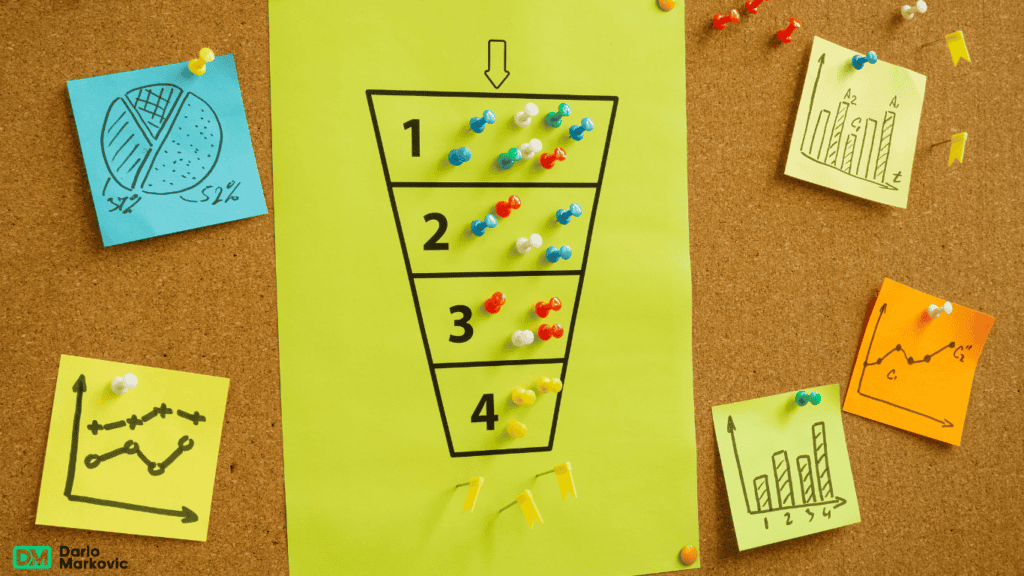
I’ve been in the B2B sales game for over a decade now, and let me tell you, measuring and optimizing your sales funnel is crucial.
It’s not enough to set it up and let it run on autopilot. You’ve got to keep a close eye on those metrics and continuously refine your approach.
Defining Key Metrics
First, you must define the key metrics that matter most to your business. For me, it’s all about that conversion rate.
How many of those leads are turning into paying customers? But it’s not just about the final sale. I also track lead quality, customer acquisition costs, and the sales cycle length.
Each of these metrics gives me valuable insights into the health of my funnel.
Tracking and Analyzing Data
Once you’ve got your key metrics defined, it’s time to start tracking and analyzing that data. I’m a big fan of using tools like Google Analytics and CRM systems to view my funnel performance comprehensively.
It’s not always pretty, but facing the hard truths in your data is the only way to identify areas for improvement.
Trust me, I’ve had my fair share of “oh crap” moments when diving into my funnel analytics. But that’s the beauty of data – it doesn’t lie. It shows you exactly where to focus your efforts to get better results.
Identifying Bottlenecks and Opportunities
Speaking of areas for improvement, let’s talk about identifying those bottlenecks and opportunities in your funnel.
In my experience, the most common bottleneck is usually in the middle of the funnel, where leads get stuck in the evaluation stage.
They’re interested but not quite ready to commit, so you need to get creative with your nurturing and engagement strategies.
Maybe it’s time to break out the case studies and showcase how you’ve helped similar companies achieve their goals.
Or perhaps you need to fine-tune your messaging to better address their specific pain points and challenges.
Conversely, analyzing your funnel data can also reveal unexpected growth opportunities. I once discovered that a particular type of content marketing drove many high-quality leads, so I doubled down on that strategy and saw a significant conversion boost.
Continuously Refining Your Funnel
Here’s the thing about B2B sales funnels: They’re never really “done.” There’s always room for improvement and optimization.
That’s why I believe in continuously refining my funnel based on the insights I gather from my data. It’s an ongoing sales process of testing, measuring, and iterating.
Sometimes, the changes are small, like tweaking a headline or call-to-action. Other times, they’re more significant, like overhauling an entire funnel stage.
But no matter the scope, I aim to create a more seamless, effective journey for my leads and customers. And when you get it right? It’s like magic.
A well-oiled B2B sales funnel is a thing of beauty. So don’t be afraid to roll up your sleeves and get your hands dirty with the data.
Embrace the continuous optimization sales process and watch your funnel (and revenue) soar.
Dario’s Summary
Phew, that was quite the journey through the top 5 B2B sales funnel examples, wasn’t it? But here’s the thing – these funnels aren’t just a flash in the pan. They’re proven, time-tested strategies that can take your business to the next level.
Adapt these success stories to your unique situation and experience the power of a well-optimized funnel. More leads? Check. Higher conversion rates? You bet. Increased revenue? It’s all within reach when you put these techniques into action.
Ready to skyrocket your business? Take other B2B sales ecommerce examples from another blog and run them with them. Implement the strategies, watch your conversions soar, and give yourself a well-deserved pat on the back.
Frequently Asked Questions on B2B Sales Funnel
To optimize your B2B sales funnel:
- Understand your target audience and their pain points.
- Create compelling and personalized content at each stage of the funnel.
- Use analytics to track performance and identify areas for improvement.
- Align sales and marketing teams to ensure seamless customer experience.
- Continuously test and refine your strategies based on data and feedback.
Technology plays a crucial role in managing and optimizing a B2B sales funnel. CRM (Customer Relationship Management) systems, marketing automation tools, analytics platforms, and communication software help track leads, automate processes, and personalize interactions with prospects.
Key metrics to measure B2B sales funnel success include:
- Conversion rates at each stage of the funnel.
- Customer acquisition cost (CAC) and return on investment (ROI).
- Average sales cycle length and velocity.
- Lead quality and engagement metrics.
- Customer retention and lifetime value.
You can find B2B sales funnel templates and resources online through marketing blogs, industry publications, and marketing software providers. Many CRM and marketing automation platforms also offer resources and best practices for designing and implementing effective B2B sales funnels.
These FAQs provide insights into B2B sales funnel concepts, stages, and strategies. Consider consulting with sales and marketing professionals familiar with B2B lead generation and conversion techniques for specific guidance tailored to your business.
And with this, I believe that you can trust me to help you in navigating B2B sales funnel for your business growth.

